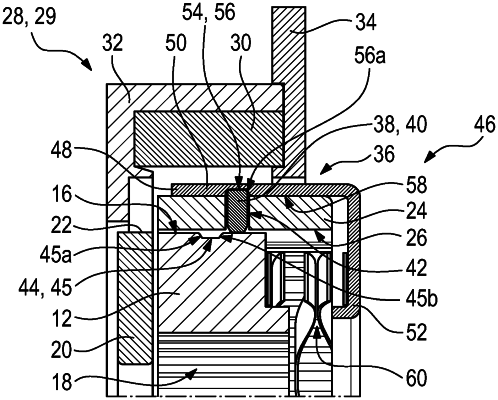| CPC F16D 11/14 (2013.01) [F16D 2011/006 (2013.01); F16D 2011/008 (2013.01)] | 13 Claims |

|
1. A coupling device for coupling two components in a torque-conducting manner, comprising:
a first coupling component which is rotatable about an axis of rotation, has an at least sectionally circumferential first external toothing, and is adapted to be fastened to one of the components to be coupled,
a second coupling component which is rotatable about an axis of rotation, has an at least sectionally circumferential second external toothing, and is adapted to be fastened to the other of the components to be coupled, and
a sliding sleeve which has an at least sectionally circumferential internal toothing which is permanently engaged with the first external toothing and can be selectively brought into engagement with the second external toothing, so that the first coupling component and the second coupling component are coupled in a torque-conducting manner in a rotationally coupled state, in which the internal toothing is engaged with both the first external toothing and the second external toothing, and are rotationally decoupled in a release state, in which the internal toothing and the second external toothing are disengaged,
wherein a locking unit is provided having a locking element mounted in a displaceable manner on the sliding sleeve,
wherein the locking unit can selectively assume a locking state in which the locking element engages in a locking contour on the first coupling component so that the sliding sleeve is held in a form-fitting manner in the rotationally coupled state, and wherein the locking unit can selectively assume an unlocking state in which the locking element is located outside the locking contour,
wherein a latching component comprises a magnetizable material, so that the latching component is displaceable by an electromagnetic actuator, and
wherein a locking contour on the first coupling component is a peripherally at least sectionally circumferential groove limited by axial walls extending obliquely so that a cross-section of the groove tapers in the direction of a groove base, and wherein, in a locked state in which the locking element protrudes into the groove, the locking element contacts one of the oblique axial walls and is urged radially outwardly against a latching contour.
|